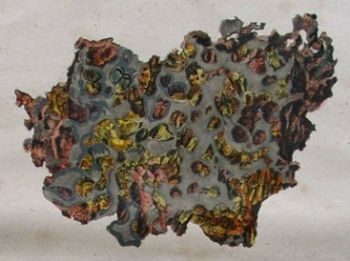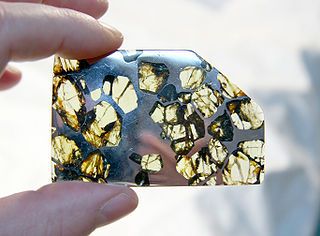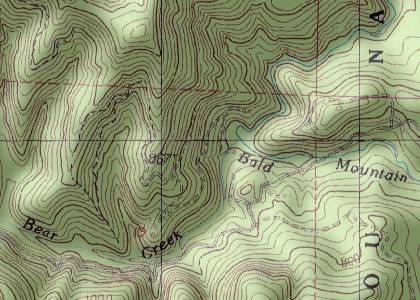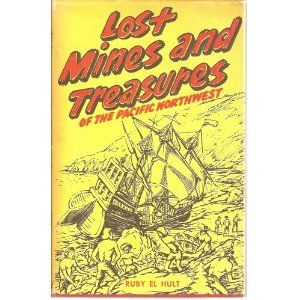
Publisher:
Bonnie King
CONTACT:
Newsroom@Salem-news.com
Advertising:
Adsales@Salem-news.com

~Truth~
~Justice~
~Peace~
TJP
May-12-2012 17:50

 TweetFollow @OregonNews
TweetFollow @OregonNews
Astounding Revelations about the Port Orford Meteorite
J. D. Adams Salem-News.comCosmochemical studies and dynamical models of hit-and-run planetary collisions suggest a new origin for the stony-iron meteorites called pallasites.
 Krasnojarsk Pallasite Meteorite |
(SALEM) - Coveted, analyzed, eulogized, and resurrected, the Port Orford Meteorite is the nucleus of one of Oregon’s classic stories of unclaimed wealth. As both a historical curiosity and gem-laden pallasite meteorite, it would be considered priceless. The legend endures because of enigmatic artifacts from the past, like the talismans of Neahkahnie Mountain or the huge gold nuggets of the Blue Bucket Mine.
The story begins with Dr. John Evans, a trained medical doctor who took part in a survey of the Midwest in 1848, in which his discovery of fossil remains earned him international acclaim. The current dogma concerning the Port Orford Meteorite would have you believe that Dr. Evans was ill-trained and unprofessional. The following passage attests to the forthright character of Dr. Evans, from an article written by Erwin F. Lange, American Philosophical Society, Volume 103, Number 3:
- In 1847 Dr. David Dale Owen who was appointed United States Geologist to conduct a geological survey of Wisconsin, Iowa, Minnesota, and part of Nebraska chose as sub-agents Dr. John Evans and Dr. B.F. Shumard. The work of Evans soon attracted the attention of Owen so that great confidence was placed in his ability.
- In addition to his scientific duties, Dr. Evans had almost exclusive control of the business department of Dr. Owen's survey, which of itself involved an immense deal of labor. The satisfactory manner in which he discharged these onerous duties, often in the midst of disheartening privations and even danger, commanded the highest esteem and confidence of Dr. Owen and his associates, while his goodness of heart, uniform courtesy, and self-sacrificing disposition, secured to him their warmest friendship.
 David Dale Owen |
Dr. Evans came to the Northwest as part of an expedition surveying a route for a railroad to Puget Sound from the east. After he was hired as a geologist by the U.S. Department of the Interior, he traveled to the Port Orford area in 1856 as part of his job surveying Oregon.
Dr. Evans spent two weeks in the area of the Coquille and Umpqua Rivers on the southern Oregon Coast; somewhere along the way he collected a rock specimen that was analyzed by Boston chemist Dr. Charles Jackson, revealing that it was an exceptional variety of meteorite known as a pallasite. Pallasite meteorites usually contain the silicate olivine, a yellow-green gemstone material, and are therefore valued for their exotic beauty as well as for research.
 Pallasite meteorite |
Meteors are formed from catastrophic events such as the breakup of comets or planetary collisions, and become meteorites upon striking the Earth. The long-held belief was that the stony-iron composition of pallasite meteorites indicated an origin in large celestial bodies at the boundary zone between layers. New thinking proposes that glancing collisions have fused these materials, which accounts for the variations in composition within a given meteor.
According to Dr. John Evans, approximately five feet of the meteorite was projecting above the ground. He estimated the weight of the meteorite as being around 22,000 pounds, making the Port Orford Meteorite easily the largest pallasite ever found. Reports of the incredible find provoked curiosity and debate amongst astronomers and geologists, but before Congress could appropriate the funds for a second trip to the site, Dr. Evans died of pneumonia on April 13th, 1861. Interest in retrieving the meteorite eventually faded, and no map was ever found that detailed its location.
A journal of Dr. Evans' explorations in the Pacific Northwest is in the possession of the Smithsonian Institution. The relevant entries are under the title "Route from Port Orford Across the Rogue River Mountains," a location that is generalized and misleading. According to his journal entries, Dr. Evans passed northward and never crossed the divide into the Rogue River watershed.
 |
Dr. Evans set out from Port Orford on July 18, 1856 and ended up on the coast fork of the Willamette River on July 31. In his journal he makes no specific mention of a meteorite because he was unaware of the nature of his find. He does, however, make a passing reference to a "Bald Mountain." After being contacted by Mr. Jackson about the significance of the sample, he recalled the location as being approximately forty miles from Port Orford on the top of Bald Mountain. The sample in question is removed from a partially buried rock on a western-facing grassy slope otherwise free from any other protrusions. Bald Mountain, as Dr. Evans described it, is higher than the surrounding mountains and easily seen from the ocean.
The acquisition of the journal rekindled an interest in the Port Orford Meteorite, and in 1929 and again in 1939 the Smithsonian Institution mounted exploratory expeditions but neither search yielded any clues. There are several bald mountains in the area; one southeast of Port Orford, a Bald Knob in Coos County, and a Brushy Bald Mountain in the Rogue River area. Some say it may be Iron Mountain, Barklow Mountain, Bray Mountain, or Granite Peak. With the numerous possibilities, the Port Orford Meteorite may have easily eluded all who have attempted to find it.
 |
In "Lost Mines and Treasures of the Pacific Northwest" (1957), author Ruby El Hult reports an incident that adds credibility to the existence of the Port Orford Meteorite. The fervor concerning the meteorite had its beginnings in a Sunday feature story titled "Treasure for the Finding" that appeared November 21, 1937, in the Portland Oregonian. The author was Dr. J. Hugh Pruett, an astronomer at the University of Oregon. His article related the story of the Port Orford Meteorite, including speculation that it would sell for up to $100 a pound. With the weight of the meteorite estimated at 22,000 pounds, the article touched off a firestorm of public fascination. Then a miner named Bob Harrison divulged that the meteorite was on a nickel claim he held in the Salmon Mountains. Harrison found that large amounts of nickel had come off the meteorite when it fell into a mountain he described as "Bald Knob." The metal lay strewn about and was responsible for the high nickel content on his claim. Dr. J. F. Diller of the U.S. Geological Survey tested a fragment of the rock on Harrison's claim and pronounced it to be a meteorite, but nothing further was determined.
The elusive nature of the Port Orford Meteorite has given rise to alternate theories and analysis of the original Evans sample, which found it to be similar to another main group pallasite known as Imilac. However, to put this information in context, something amounting to a baseline analysis needs to be done. In other words, the question of the overall similarity of main group pallasites needs to be answered first. In this case, it would have revealed that similarities exist in the composition of the majority of main group pallasite meteors.
From Pallasites - Metal Composition, Classification and Relationships with Iron Meteorites by Edward R. Scott, this statement alludes to the possibility that various geologically separate meteorite falls may be related.
“In the main group Ni is negatively correlated with Ga, Ge and positively with Au and probably with the Fa content of the olivine. The other members of the Eagle Station trio are Cold Bay and Itzawisis. Rawlinna, Springwater and Phillips County have metal compositions appropriate to high-Ni main group members but fayalite contents are too high for main group trends. Glorieta Mountain and Pavlodar appear to be unique pallasites. Ilimaes, Antofagasta, Ollague and Salta are probably pieces of Imilac, a main group member.”
In the following citations, the term differentiated refers to planetary bodies that have separated into layers such as the core, mantle, and crust.
Formation of Stony-Iron Meteorites in Early Giant Impacts
Cosmochemical studies and dynamical models of hit-and-run planetary collisions suggest a new origin for the stony-iron meteorites called pallasites.
Written by Edward Scott (Hawai‘i Institute of Geophysics and Planetology), Joseph Goldstein, and Jijin Yang (University of Massachusetts, Amherst “Pallasites, meteorites composed mainly of olivine (Mg-Fe2SiO4) and metallic Fe-Ni, are thought to have formed at the boundary between the metallic core of a melted and
“Pallasites, meteorites composed mainly of olivine (Mg-Fe2SiO4) and metallic Fe-Ni, are thought to have formed at the boundary between the metallic core of a melted and differentiated asteroid and the surrounding olivine mantle, but their precise origin is controversial…Pallasites, the iron meteorites, and their parent asteroids are vestiges of a vast population of differentiated bodies with a violent early impact history.” Furthermore, “About 90-95% of the 85 known pallasites, which comprise the main group, have similar compositions and probably come from a single body.”
And from the ORE BIN, “The Port Orford Meteorite”, Volume 26, No. 7, July 1964:
“Dr. Charles T. Jackson, a Boston chemist, discovered the meteorite among the specimens collected by Dr. Evans. Dr. Jackson brought the meteorite to the attention of the Boston Society of Natural History at its October 5, 1859 meeting. The proceeding of the Society published in 1861 were the first public notice of the find, noting that: "....among some specimens recently received from Oregon Territory was a piece of meteorite containing crystals of olivine (and) yielding 9 percent of nickel. It was identical in appearance, and probably in composition, with the Pallas meteorite of Siberia;" noting that it was "...not improbable that pieces may have fallen in the same meteoric shower in both countries as has happened in other instances through less widely separated."
The theory of early impact pallasite formation creates a new dynamic of inheritance in separate meteorite falls that could explain the mystery of the Port Orford Meteorite and the Imilac Meteor connection. Hence the Evans sample would likely show a similarity to Imilac due to the prevailing trends in main group pallasites, and not because Dr. Evans had deliberately inserted an Imilac specimen.
It should be noted that the degree of weathering on the Port Orford Meteorite would be minimal because the climate of Port Orford is quite mild and drier than the central and northern sections of the Oregon Coast Range. As such, the argument for the sample being a fragment from the Imilac fall in Chile based on weathering is somewhat overstated; however the two may share a distant origin in the cosmos. Once again, mankind looks into the blackness of space to ponder the mysteries that lurk there. And like the spirit of Dr. Evans, the Port Orford Meteorite has slipped away into oblivion, lost in the fog of controversy.
Hult, Ruby. Lost Mines and Treasures of the Pacific Northwest. Portland, Oregon: Binford and Mort, 1957.
www.sciencedirect.com/science/article/pii/0016703777902629
www.psrd.hawaii.edu/June10/pallasites-origin.html
www.williamnwallace.com/history/Port%20Orford%20Meteorite.htm
oro.open.ac.uk/22433/1/
www.sil.si.edu/
www.usclimatedata.com/climate.php?location=USOR0274
www.usclimatedata.com/
 J. D. Adams was born in Salem, Oregon, a descendant of Oregon Trail pioneer William Lysander Adams. As a wilderness explorer, photographer, and writer, he sustains a kinship with the spirit of the Oregon country. JD inhabits Oregon's Silicon Forest as an electronics professional with degrees in Electronics Engineering Technology and Microelectronics.
J. D. Adams was born in Salem, Oregon, a descendant of Oregon Trail pioneer William Lysander Adams. As a wilderness explorer, photographer, and writer, he sustains a kinship with the spirit of the Oregon country. JD inhabits Oregon's Silicon Forest as an electronics professional with degrees in Electronics Engineering Technology and Microelectronics.
He maintains a Web presence with a signature presentation in genres including travel, history, and technology.
You can write to Jim Adams at this email address: j1mcm0s@earthlink.net
Also, visit Jim's Website: home.earthlink.net/~j1mcm0s/
Articles for May 11, 2012 | Articles for May 12, 2012 | Articles for May 13, 2012


googlec507860f6901db00.html


Salem-News.com:
Terms of Service | Privacy Policy
All comments and messages are approved by people and self promotional links or unacceptable comments are denied.
[Return to Top]
©2025 Salem-News.com. All opinions expressed in this article are those of the author and do not necessarily reflect those of Salem-News.com.